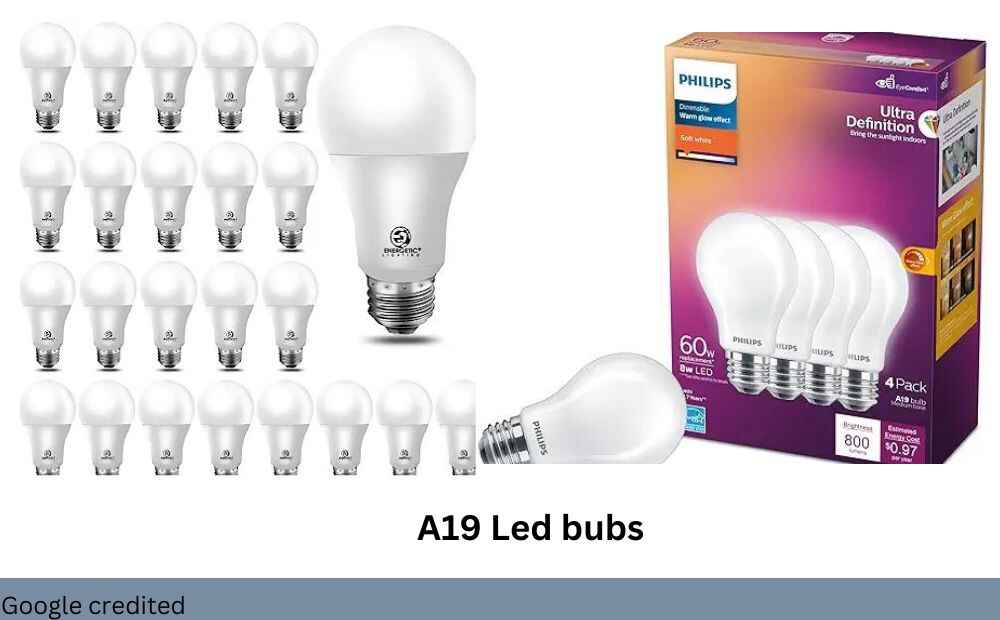Have you ever stood in the lighting aisle, confused by all the different LED bulb options? You’re not alone! Choosing between AC and DC LED bulbs can be tricky, but understanding the difference is crucial. Imagine saving more energy, reducing flickering lights, and getting the best performance for your money. Sounds great, right? In this post, we’ll break down the key differences between AC and DC LED bulbs in simple terms. By the end, you’ll feel confident and excited about picking the perfect LED bulb for your home or any other space. Let’s light up your knowledge!

Understanding LED Bulbs
LED bulbs have become popular due to their energy efficiency and long lifespan. Unlike traditional incandescent bulbs, LEDs convert most of their energy into light, not heat. This makes them a better choice for both your wallet and the environment.
What is AC and DC?
AC (Alternating Current)
- Definition: AC stands for Alternating Current. Electric charge periodically reverses direction in AC.
- Source: The electricity that comes from power plants to our homes is AC. This is why most household appliances run on AC power.
- Frequency: In the US, AC typically has a frequency of 60 Hz, while in Europe, it’s 50 Hz.
DC (Direct Current)
- Definition: DC stands for Direct Current. In DC, the flow of electric charge is in one constant direction.
- Source: Batteries and solar panels provide DC power. Many electronic devices, like laptops and smartphones, use DC power.
How LED Bulbs Work
LED bulbs need a certain type of current to work. Inside an LED bulb, there’s a small electronic component called a driver. This driver converts AC to DC, which the LED requires to light up. This is crucial for understanding the difference between AC and DC LED bulbs.
Difference Between AC and DC LED Bulbs
1. AC LED Bulbs
- Working: AC LED bulbs have a built-in driver that converts AC to DC.
- Usage: These bulbs are designed for direct use with standard household AC power. Simply plug them in, and they function.
- Efficiency: While efficient, they might lose some energy during the conversion process.
- Flickering: Sometimes, AC LED bulbs can flicker. This happens because of the alternating nature of the current. Modern bulbs minimize this, but it’s still something to consider.
- Installation: Easy to install as they fit into standard sockets.
2. DC LED Bulbs
- Working: DC LED bulbs run directly on DC power without the need for conversion.
- Usage: Ideal for use with batteries, solar panels, or any DC power source.
- Efficiency: Generally more efficient as there is no energy loss in conversion.
- Flickering: DC LED bulbs don’t flicker, providing a steady light output.
- Installation: Requires a compatible power source, which might not be as readily available as standard AC power.

Benefits and Drawbacks
a). AC LED Bulbs
1. Benefits:
- Easy to use with household power
- No need for extra equipment
- Widely available
2. Drawbacks:
- Slight energy loss during AC to DC conversion
- Potential for flickering
b). DC LED Bulbs
i). Benefits:
- Higher efficiency
- No flickering
- Ideal for off-grid systems
ii). Drawbacks:
- Requires a DC power source
- Not as commonly used in households
Applications
Where to Use AC LED Bulbs
- Homes: Perfect for standard lighting in homes.
- Offices: Great for office lighting due to easy installation.
- Public Buildings: Suitable for use in schools, hospitals, and other public buildings.
Where to Use DC LED Bulbs
- Remote Areas: Ideal for areas with no access to the grid.
- Solar Systems: Perfect for solar-powered lighting systems.
- Vehicles: Great for use in RVs, boats, and other vehicles.

Choosing the Right LED Bulb
When deciding between AC and DC LED bulbs, consider your power source. If you’re looking for a simple, plug-and-play solution for your home, AC LED bulbs are the way to go. They fit into standard sockets and work with your existing electrical system.
However, if you’re setting up lighting for an off-grid system, like a cabin powered by solar panels, DC LED bulbs might be a better choice. They are more efficient and won’t flicker, providing steady illumination.
Conclusion
Understanding the difference between AC and DC LED bulbs is crucial for choosing the right lighting solution. AC LED bulbs are convenient and easy to use in most household applications. DC LED bulbs, on the other hand, are perfect for off-grid and solar-powered systems.
By knowing your power source and lighting needs, you can choose the best LED bulb that will save you energy and provide reliable light. Whether it’s for your home, a remote cabin, or a vehicle, there’s an LED bulb that fits your requirements. Choose wisely and enjoy the benefits of modern lighting technology.
Related articles:
Hi, I’m Malik Suhail—an SEO expert, web designer, and passionate blogger with 2 years of experience. I specialize in crafting content that is not only informative but also tailored to meet the needs of my readers.
I write about diverse topics, always striving to simplify complex ideas and provide valuable insights that resonate with my audience. Whether it’s about SEO strategies, web design trends, or blogging tips, I am committed to delivering well-researched, practical, and easy-to-understand information.
My mission is to help readers navigate the digital world with confidence and clarity. I believe in adding value through authentic content that inspires action and delivers results.


